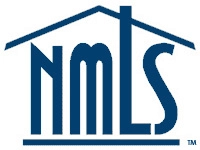When VA Down Payment Does Not Need To Be Sourced

One of the things I love about VA is they truly care about the Veteran and they do not want to over burden the Veteran with unnecessary obstacles.
This is a great example of common sense when it comes to VA loans.
Any time a Veteran is bringing 4% or less of the sales price or NOV to the closing table you do not have to source the funds. You have to show they have them but you do not have to source them.
There is a difference between proving you have the funds which is required in above scenario and sourcing where those funds came from. So, on VA if less than 4% just get proof they have it and that is all we need.
Side Note: If you give us a bank statement and it has a huge deposit right before current balance we would require an lox to make sure it is not borrowed but that is all we would need.
The reason is VA is pretty much all 100% financing anyway so why complicate things. Above would happen if Veteran paying own closing costs or not enough entitlement.
Flagstar uses very common sense underwriting and one of the things I love about my underwriters and managers.
What is the Fed Discount Window
Here is some interesting information that helps you sound smarter at a cocktail party and one step closer to understanding the Central Banking System.
The Fed Discount Window actually was a window that banks went to in order to borrow money from the Fed in order to maintain proper reserves if a bank had excessive withdrawals of funds out of their bank on any given day.
Currently there are 5,503ish banks insured by the FDIC and as part of the Federal Banking System.
Of those 5,503, 900+ took a loan from The Fed for whatever reason last year or 2020 I think. As a standard, The Fed discount window is a lender of last resort when a bank needs funds but almost 20% of banks borrowed from the Fed. Many times because it is much easier but it is more expensive which is not good for banks bottom lines.
The reserve requirement is set by the Fed and usually ranges between 0 and 10% with 10% being the preferable amount. So total deposits x 10% would be what they would need in actual funds if a customer wanted to withdraw funds. If they do not have the required reserves available at the end of the day they must borrow from another bank or the Fed to keep them within policy. During the pandemic the reserve requirement was lowered to 0% to help banks manage their business and for depositors to begin depositing again.
The discount window has a Primary, Secondary and Seasonal lending rates.
Primary is a solid bank that needs funds for whatever reason and provides collateral for said funds and pays a rate of interest to The Fed then pays it off on a short term basis but allowed up to 90 days.
Secondary means The Fed looks a little closer, other banks are not willing to lend to them and The Fed is a bit pickier on collateral and why they need the money and is usually only lent to them overnight and not 90 days.
Seasonal means for example Christmas time depositors withdraw a ton of money to buy Christmas presents and reserves on hand need replenished so a temporary loan is given through the Fed discount window.
You must be a member of the Central Banking System to go to the Fed Discount window which means you become a member and are required to keep a certain amount of reserves with the Fed which is what they use to fund loans. Having this system keeps the entire financial system liquid and bank runs a thing of the past.














